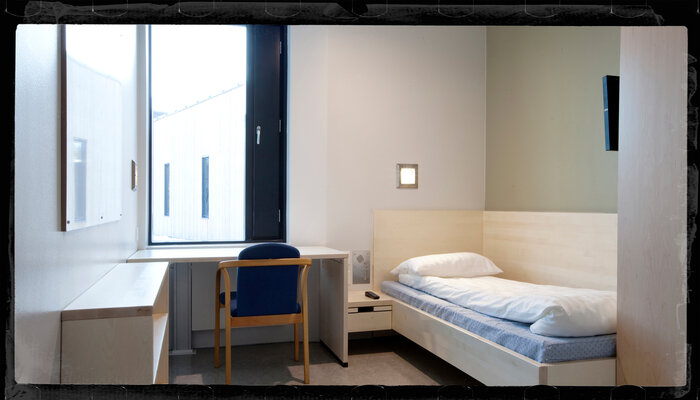This essay is part of the Brennan Center’s series examining the punitive excess that has come to define America’s criminal legal system.
On a cold morning in February 2013, I led a group of American policymakers and criminal justice practitioners — judges, public defenders, legislators, corrections officials, law professors — on a visit to a juvenile prison in eastern Germany. We met with a group of young men, largely between the ages 18 and 21, who were serving between two to five years at the facility; most had been convicted of a violent offense.
Although these young men certainly looked like teenagers or very young adults — dressed in jeans, cargo pants, colorful T-shirts, sweatshirts, and baseball caps — they would certainly not be considered “juveniles” in the American system of punishment, which generally caps the upper age of juvenile status at 17. A striking aspect of German law extends the ambit of “juvenile justice” — centered on minimum intervention and diversion — to young adults up to age 21. Nearly two-thirds of young Germans in this age group who are involved in the justice system typically benefit from this.
The young men were brimming with excitement. They were eager to show the visitors where they worked and studied, how they decorated their rooms, and where they cooked their meals. They even introduced us to some of the animals they attentively looked after. They also had a million questions for our group, but one stood out: they wanted to know what sentence they would have received if they had been convicted in the United States. It was a stark and confronting question.
One judge seemed almost unnerved with her own response as she told a young man serving a four-year sentence that he likely would have received 43 years for grievously assaulting a fellow young person and causing brain injury. When pressed why she would have doled out such a long sentence, the judge tried to summon an answer, but hesitated, casting around for assistance from her fellow Americans. She could only say what sentence was both mandated by the law and typical of sentencing practices in her state. But she didn’t know why. The conspicuous disparity in the scale of punishment revealed how absurdly punitive criminal sentences are in the United States and shattered some of the Americans’ assumptions of what constitutes proportional punishment.
Between 2013 and 2019, I organized four such study trips to introduce American criminal justice officials to several different Northern European corrections systems. One of the most striking encounters was a November 2018 visit to the neat and well-appointed living and working quarters of Halden Prison in southern Norway, a maximum security facility that has received much international attention for being the “most humane prison in the world.”
Our delegation was surprised not only by the physical aspects of the place — open, well-lit, and bright, with lots of green spaces — but also the high degree to which the conditions of confinement were organized around the normalization principle, which recognizes the inherent harms of incarceration and requires that life in prison approximate the positive aspects of life in the community. Under this principle, punishment is restricted to the separation from society mandated by the custodial sentence itself. Conditions of confinement should themselves be neither punitive nor onerous. Instead, the aim of the incarceration experience is to enable smooth reintegration of people upon release and to lead a life of social responsibility.
Consequently, life at Halden is organized around the promotion of safety, well-being, and personal development, orchestrated to mimic life on the outside. Incarcerated individuals live in private rooms with doors and private bathrooms. Small groups share communal living spaces that include fully equipped kitchens. There is even a well-outfitted music studio, dubbed “Criminal Records,” for recording albums or producing a radio show.
They are also encouraged to maintain a healthy measure of autonomy and personal agency in organizing their daily lives — they cook their own meals and are provided with an array of vocational training and educational programs, as well as various treatment options. They are given ample opportunities to maintain contact with family and friends, and they can all earn the award of brief periods of temporary leave from prison.
Meanwhile, wardens — many of them trained lawyers, social workers, and mental health professionals — and corrections officers are encouraged to develop strong social relationships with the people they supervise, which helps create a respectful, supportive, communicative, and caring environment. Almost half of the approximately 290 prison staff are women.
Discipline is very finely graded and disciplinary measures are closely tied to violations. Least restrictive sanctions are preferred, such as reprimands, brief restrictions on money, property, movement or leisure activities, or delays in scheduled home leave. Punitive solitary confinement is almost never used and is tightly restricted to 8 hours. Unsurprisingly, violence is rare.
Contrast this with the U.S. corrections system, where penal life and settings are ordered around the paramount goals of “custody and order.” American prison life is built upon the dehumanizing rituals of induction, initiation, hierarchy, degradation and routine, all designed to assert authority and control over the bodies and lives of incarcerated people. Individuality is stripped away upon prison entry, replaced by an inmate number and a standardized, nondescript uniform.
Life in a U.S. prison is filled with an endless parade of security measures (caging, handcuffing, shackling, strip and cell searches, and lockdowns) punctuating a daily routine marked by enforced idleness, the ever-present risk of violence, often adversarial relationships with prison staff, and only sporadic opportunities for constructive activities offering rehabilitation, education, or treatment. Solitary confinement is often used as punishment for minor violations of prison rules, such as talking back, being out of place, or failure to obey an order. Incarcerated individuals in America live in a harsh, dystopian social world of values and rules, designed to control, isolate, disempower and erode one’s sense of autonomous self.
Can Northern Europe’s “human dignity” approach to corrections guide America down a pathway to help undo the degrading, disempowering, alienating, and brutalizing nature of confinement? Many argue that there are too many differences — in politics and law, penal philosophy and punishment culture, in crime types or rates, and system scale and correctional resources. Some even argue that America is too different culturally — they more homogenous, us more diverse.
But these differences obscure some important similarities, both current and historical. Many European systems, even those currently held up as models, once had much higher incarceration and recidivism rates than they do today. And they continue to face challenges similar to our own, including overcrowding, overrepresentation of people with mental illness, and a growing and increasingly diverse population of foreign-born individuals.
The simple fact is that Finland, Germany, the Netherlands, and Norway have all made a deliberate choice to do things differently. To be sure, Germany’s turn towards a human dignity approach was largely directed and deeply informed by the post-war political arrangements and human rights consensus that emerged after World War II. Norway and Finland, on the other hand, demonstrate that a country need not suffer cataclysmic events — genocide, military defeat, foreign occupation — to induce fundamental change.
 AFT/Getty
AFT/Getty
In all my European trips with fellow criminal justice scholars and practitioners, there were always two questions on the lips of every member of every American delegation: “Does human dignity work?” and “How much does it cost?” Reform-minded correctional practitioners and policymakers often require political cover, usually in the form of “evidence-based practices” or “cost-effective” solutions, to justify proposed changes.
But how do you study the goal of human dignity? Can you isolate the appropriate variables to truly measure cause and effect? If studies came back with bad results, or if methods are found to cost too much, would one stop treating people humanely? While European corrections officials are also interested in “what works,” they explain that there are things they simply cannot and would not do to another person on principle, such as keeping people in punitive isolation indefinitely.
Instead, they point to other proof points. Aggression and physical violence — between incarcerated people, or against staff — are rare. Recidivism is lower than in many other countries. Prisons are in large part calm, quiet, even strangely congenial places with high degrees of trust between staff and the incarcerated population. Perhaps illustrative of this was the one word the delegation visiting Halden kept on hearing, from corrections officers and prisoners alike: “hopeful.” One young man was “hopeful” he would be “better” and make his family “proud.” He was “hopeful” that he would be forgiven by the person he hurt. He was also hopeful that one day he could forgive himself. Prison staff, too, expressed hope — hope that their efforts will help the people they supervise and, on a larger level, hope that they were making a meaningful contribution to the overall safety of the community.
When confronted with what they saw in various facilities, most of the American visitors eventually came around, despite their initial skepticism. The spectrum of what was possible had widened. To treat people humanely and with respect and dignity, they needn’t wait to build a facility like Halden, nor wait for a legislature to thickly weave a human dignity approach into the skein of their penal laws. While it may require an adjustment in training, treating people on a person-to-person basis with respect and dignity is essentially free.
Putting the brakes on American punitive excess can and should be accomplished by centering human dignity as a foundational, organizing principle of the nation’s corrections system. Experiments across the country at the prison unit level — in Connecticut, North Dakota, Pennsylvania, and elsewhere — are trying to implement this human dignity ethos. But these tentative steps will not likely stop the dominant punishment culture that helped give rise to mass incarceration. Fundamental changes to the “soul-chilling inhumanity” of America’s prisons, as one judge has described it, will certainly require much more.







